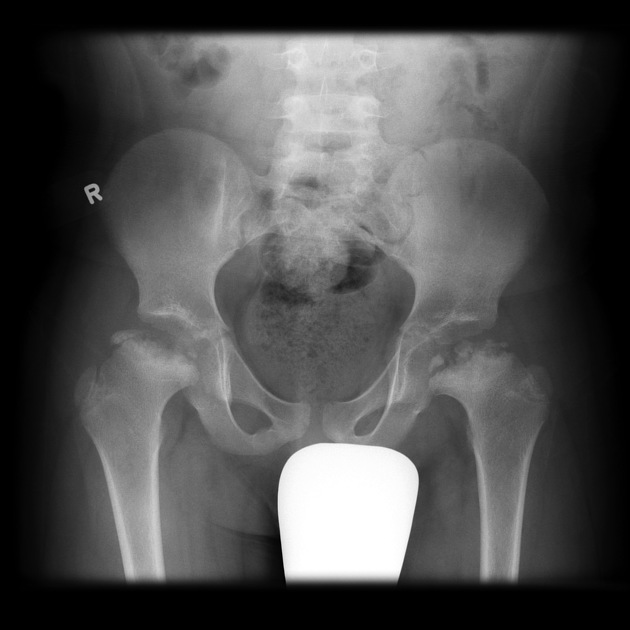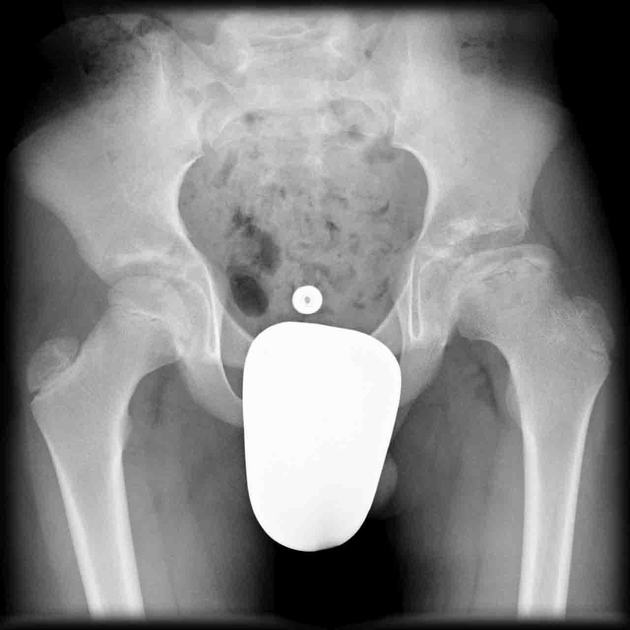The Waldenström classification of Perthes disease refers to x-ray abnormalities and represents four temporal phases of the disease. These stages have been further subdivided in the modified Elizabethtown classification 2.
-
stage I: early
- asymmetric femoral epiphyseal size (smaller on the affected side)
- apparent increased density of the femoral head epiphysis
- widening of the medial joint space
- blurring of the physeal plate
- radiolucency of the proximal metaphysis
-
stage II: fragmentation
- subchondral lucency (crescent sign)
- femoral epiphysis fragments
- femoral head outline is difficult to make out
- mottled density
- thickened trabeculae
-
stage III: reparative
- re-ossification begins
- shape of the femoral head becomes better defined
- bone density begins to return
-
stage IV: healed
- depending on the severity, the femoral head may be nearly normal or may demonstrate:
- flattening of the articular surface, especially superiorly
- widening of the head and neck of the femur
- depending on the severity, the femoral head may be nearly normal or may demonstrate:
History and etymology
The staging system originally described by J H Waldenström in 1922 had some differences in numbering (IA: initial stage, IB: fragmentation stage, II: healing period, III: growing period, IV: definite stage) 4. What is today widely known as Waldenström classification is probably better reflecting the classification used by S T Canale in 1972 5 and is therefore called Elizabethtown classification by some 2.






 Unable to process the form. Check for errors and try again.
Unable to process the form. Check for errors and try again.